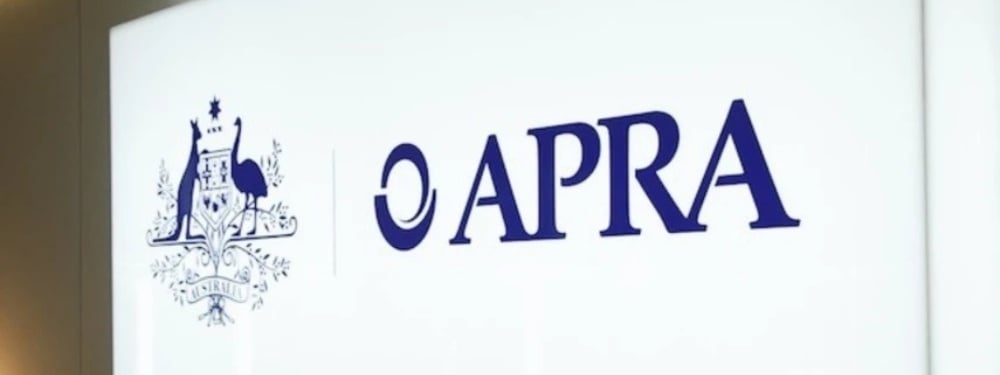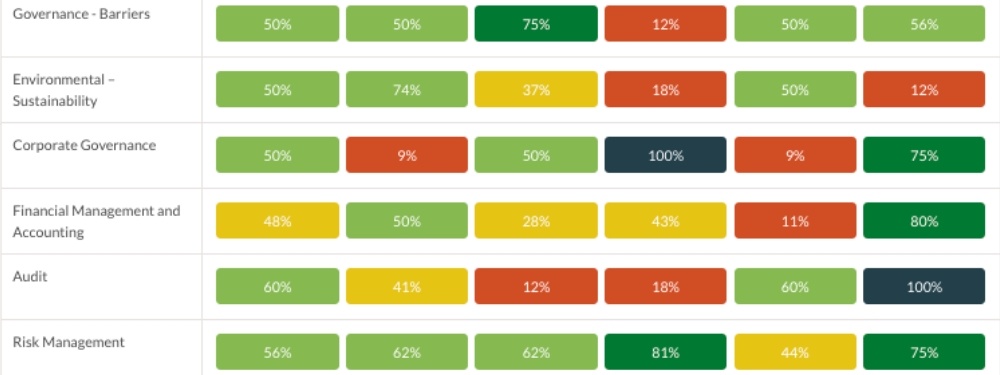
GovernWith Blog
GovernWith blog for Boards, Directors and Executives who want to develop their governance capabilities, achieve their strategic goals and mitigate risk.


Board Composition
When discussing board composition, the following topics should be considered:

SPOTLIGHT: Director Skills Matrix for Financial Institutions
Watch this short informal but informative conversation between Fi Mercer – GovernWith CEO, and Jennifer Dean – GovernWith Financial Institution Professional Advisor, for insight into:

Top 5 Board Management Challenges in Australia
Australian Boards face mounting pressure to strengthen corporate resilience amid economic, technological and regulatory disruptions in 2025.

Enhancing Board Governance and Regulatory Compliance for Financial Institutions
In March 2025, the Australian Prudential Regulation Authority (APRA) released a Governance Review Discussion Paper outlining proposals for enhancing governance frameworks within financial institutions. Among these, Proposals 1 (Skills and Capabilities) and 5 (Board Performance Review) both stand out as particularly significant. GovernWith’s Governance Review, Director Skills Matrix and External Evaluation services are specifically designed to provide comprehensive, contemporary and accessible governance assessments. These solutions not only meet APRA’s expectations but also help our clients meet regulatory requirements while strengthening overall governance effectiveness.

Interview with Jennifer Dean
Watch this short interview with GovernWith's Jennifer Dean and Fi Mercer to learn more about:
- Jennifer and her wealth of experience as a non-executive and executive Board Director, an actuary and financial services, superannuation and insurance industry executive with over 25 years experience.
- The importance of self-led annual and externally-led evaluations for Financial Institutions
- The types of clients and organisations Jenny works with
- Jenny's role as a Financial Institutions Professional Advisor and Expert Convenor with GovernWith
- Some final tips and tricks for Financial Institutions looking to enhance their compliance and contemporary governance capability
{% module_block module "widget_626b33e6-873e-4734-a03a-554457769d4d" %}{% module_attribute "child_css" is_json="true" %}{}{% end_module_attribute %}{% module_attribute "css" is_json="true" %}{}{% end_module_attribute %}{% module_attribute "definition_id" is_json="true" %}null{% end_module_attribute %}{% module_attribute "field_types" is_json="true" %}{"testimonials":"group"}{% end_module_attribute %}{% module_attribute "label" is_json="true" %}null{% end_module_attribute %}{% module_attribute "module_id" is_json="true" %}99618746242{% end_module_attribute %}{% module_attribute "path" is_json="true" %}"atlas-theme child/modules/Testimonials"{% end_module_attribute %}{% module_attribute "schema_version" is_json="true" %}2{% end_module_attribute %}{% module_attribute "smart_objects" is_json="true" %}[]{% end_module_attribute %}{% module_attribute "smart_type" is_json="true" %}"NOT_SMART"{% end_module_attribute %}{% module_attribute "tag" is_json="true" %}"module"{% end_module_attribute %}{% module_attribute "testimonials" is_json="true" %}[{"author":"Kathy Dickson","color_field":{"color":"#ffffff","opacity":100},"content":"\"After completing a full Board assessment and Governance Review, led externally by Jennifer Dean of GovernWith, the results have been outstanding. We now have a clear Action and Implementation Plan for the next two years. This provides reassurance for both the Board and Management, setting a strong foundation with clear objectives and expectations. Through our partnership with GovernWith, we’ve successfully integrated regulation and compliance — including preparation for ESG reporting — into a modern, user-friendly document that supports our Strategic Plan.\"","picture":{"alt":null,"size_type":"auto","src":""},"position":"CHAIR, FAMILY FIRST BANK"}]{% end_module_attribute %}{% module_attribute "type" is_json="true" %}"module"{% end_module_attribute %}{% module_attribute "wrap_field_tag" is_json="true" %}"div"{% end_module_attribute %}{% end_module_block %} {% module_block module "widget_96c6dbff-f98d-47a3-83f7-6ba4d1faa74a" %}{% module_attribute "child_css" is_json="true" %}{}{% end_module_attribute %}{% module_attribute "content" is_json="true" %}{% raw %}"

The Role of Governance Evaluation in Today's Australian Business Environment
This article explores the term Governance Evaluation and examines its significance in maintaining the integrity of the Australian business environment. In business and legal settings, it is crucial to start with clear definitions, so here we go.

Governance of AI
With the recent release of the Australian Government’s Voluntary AI Safety Standard, now is the perfect time to explore the Governance of AI and how Boards should be thinking about the use of AI in the businesses they oversee.

GWCiT Partnership Launch | Press Release
GovernWith, market-leader inContemporary Governance Review & Development, and Convene, Australia’s premier Board management software, are thrilled to announce their strategic partnership. The collaboration introduces GWCiT (GovernWith x Convene in Microsoft Teams), a unified platform designed to assure compliance, enhance governance effectiveness and streamlineBoard administration, all through Microsoft Teams.

Aged Care Reform and the Role of Contemporary Governance
In recent years, Australia's aged care sector has experienced significant changes aimed at improving quality, safety, accountability, and governance. For Boards, Directors, Executives, and Subcommittees in aged care organisations, understanding these Reforms and their implications, as well as the role of leadership in contemporary governance, is essential for successfully navigating these transformations.

Empowering diversity on your Board (and Executive)
Diversity, Equity and Inclusion (DEI) have been words ever present when talking about organisational culture and workforce, particularly in the last year. In Australian organisations, initiatives for DEI aim to guarantee representation and inclusive treatment of diverse workforces. These efforts strive against discrimination linked to race, gender, age, sexuality, and other minorities. Australian companies are increasingly embedding DEI into their operational frameworks by adopting detailed policies, conducting training programs, and collaborating with a variety of community groups. This approach is fostering a more inclusive corporate environment nationwide, but what about for our boards?
Celebrating its tenth year, the Board Diversity Index* stands as the exclusive in-depth analysis of Australian boards. It surveys the top 300 ASX listed companies, focusing on gender, cultural background, age, skills/experience, tenure, and independence. While providing no data in relation to the not-for-profit space, we could assume the findings wouldn’t be too dissimilar.
Though there has been some progress, especially in the number of board positions held by women, in many areas there has been no progress made at all, if not a decline.
The average age of a Board Member is still over 60 with a rapid current wane in directors under 50, there is no data on directors who are disabled, racial diversity remains under 10% with even less representation of First Nations Peoples, and the LGBTQIA+ Community had 4 openly identified directors total.
These findings are staggering. In Australia 42% of people who identify as LGBTQIA+* hide their identity at work and community events, 1 in 5 people in Australia have a disability*, 30.7% of the Australian population were born overseas*. When asking the question of their stakeholders, “Do they see themselves represented within our Board and Executive?”, many organisations simply need to answer no.
Corporate, sector and professional skills are fundamental when it comes to looking at a board’s capabilities and being assured the members reflect a make-up of people with strategic oversight in all required responsibilities. When viewing this through a contemporary governance lens - a diverse range of lived experiences, community engagement and societal perspectives are also, unequivocally, essential.

The Boardroom Bystander Effect
The Boardroom Bystander Effect
Coming out of the 2023 GovernWith Contemporary Governance Risks Whitepaper, there was an interesting phenomenon we saw trending through the data. The data collected had more than 2,000 individual contributions across both the Board Governance Review and the Director Skills Matrix. These two assessments meet two different criteria and require different “context hats” worn when completing them. The Board Governance Review is answered by an individual’s gauge, or evaluation, of how assured the board is that the whole organisation (board and executive included) are delivering on their Corporate, Sector Specific and Contemporary Governance roles and responsibilities. The Director Skills Matrix is answered by an individual considering their own understanding, qualifications and experience in relation to their Sector, Professional and Contemporary skills, measuring their level of capability.
While not entirely reflective of the psychological definition “an individual being less likely to help a person in need while in the presence of others”, the core message that bystanders often assume someone else will step in, is what we want to highlight.
The diffusion of responsibility, particularly in contemporary governance issues, was demonstrated when comparing an individual’s view of the organisation’s capacity overall - often being quite positive, yet individually most in these same areas indicated their own capabilities were foundational. This emphasises, and gives evidence to, an attitude of pluralistic ignorance where boards may not have the ability to recognise or ask the right questions around trends and issues, if each of them is expecting another to have the educated knowledge and experience to be the voice in those areas.
If a board has reflected in the Governance Review that the organisation are highly proficient in a particular area, but the group results of the individual skills matrix indicate most directors are foundational in their own capabilities - these results don’t align and give urgency to the risks and impact of bystander thinking.
What a fantastic opportunity we have through this data in how we can individually reflect and respond. Shown through centuries of evolution and human behaviour we witness the ultimate benefits of being altruistic, curious and community serving. It’s up to each of us to make having an educated foundation for our thinking important, and to show initiative in seeking out that self development. These human centric trends and issues we see at the forefront of governance now are everybody’s responsibility. For a board, executive and whole organisation to be its most capable and sustainable, every member needs to be a participator in their ongoing development, training and preparation in contributing to these conversations. In 2024 our goal at GovernWith is to ignite and support proactive participation, leaving bystander apathy behind in 2023.